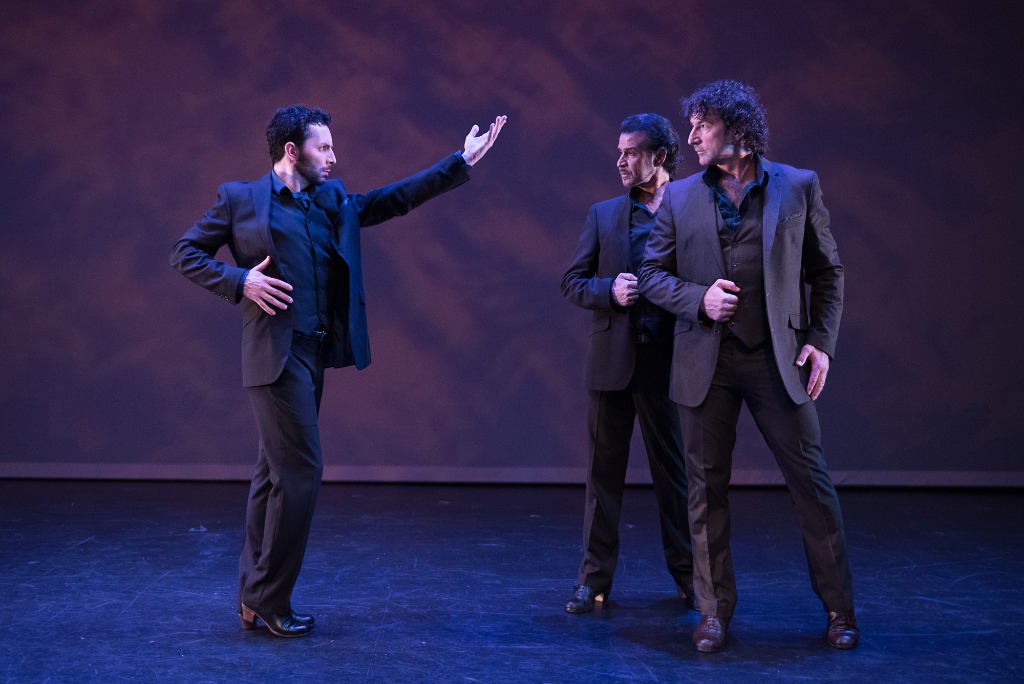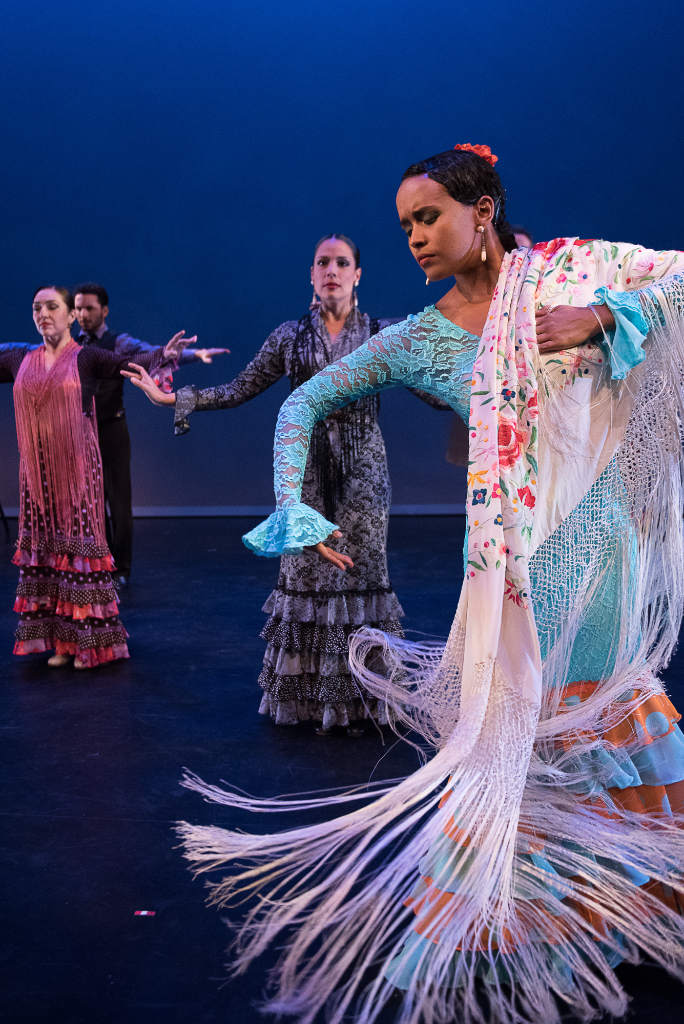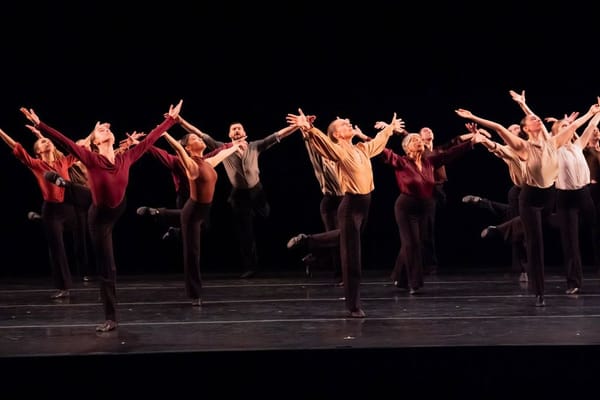Storytelling

“El Pintor,” “Pá Triana Voy,” “Sentio,” “Caminos,” “A Solas,” “A Mi Manera”
Flamenco Vivo Carlota Santana
BAM Fisher
New York, NY
May 17, 2017
In a short run at the BAM Fisher theater, Carlota Santana’s spirited company presented impressive flamenco technique, a cherished relationship with the dance form and generous storytelling through dance. The intimate setting of a small stage allowed for a closer connection to the dancers and their expression, and the performance amounted to a memorable night of richness of soul and substance.
Besides older works, the evening offered three world premieres, beginning with a resonant new piece by the company’s Associate Artistic Director Antonio Hidalgo called “El Pintor.” Based on the paintings of Spanish painter Julio Romero de Torres who captures the streets and stories of Spain’s Córdoba in story-like works of art, the work’s dancing echoed the various paintings that were projected on the screen behind it. With that, the dancers made the various two-dimensional images come to life and gave them background, depth and feeling. There was the story of several couples, with odd relationships among them, a portrait of a younger woman in her coming out years, a funeral procession and grief, and many less notable human moments, like depictions of simple passersby on the street, that were embellished and infused with life by the dancers. It was exactly what a painter would paint –- a seemingly ordinary life, made extraordinary through brushstrokes and dance moves. The stories in this performance were paramount, with the flamenco footwork in the piece appearing important but of secondary nature –- it seemed to be merely a well-honed tool expertly used for expression on the broad canvas of the dancers’ colorful interpretations. That kind of start to the evening was its first refreshing note, as it was running contrary to the trend of today’s flamenco performances that aim to start off emphasizing steps at least as much as spirit.
Of course, display of technique wasn’t going by the wayside. After a musical interlude of songs, titled “Andanluz: Tangos Flamencos,” which contained no dancing but wonderful music and singing, the company showed its second world premiere called “Pá Triana Voy” by Jose Maldonado. There, the technique flew and the dancing zeroed in on the more traditional, skill-laced interactions of flamenco. A moment had the dancers in a circle, as though in an ongoing conversation, with the formation opening and closing around inspired and virtuosic solos from the company’s six dancers. The work’s purpose was to present the neighborhood feel of certain flamenco environs, and the dance could not have conveyed better a sense of community and closeness, but also individuality. Yes, the dancers fed off each other, but every now and then a proud gesture or a high-raised chin signaled that individuality was undissolved, just intermingled.

The second half of the night was more focused on the technique of flamenco flair, though too not devoid of theater. The third and last premiere, titled “Caminos” and choreographed by the company's dancer and choreographer Angel Muñoz, was a work for three men, including Muñoz himself. There was a powerful duet for two men, an emotional solo, and an abundant display of impressive footwork. While the men were dressed alike and generally maintained a similar demeanor, through that homogenous coating the audience could see shades of different embedded characters. The men’s interplays portrayed through the language of the flamenco dance seemed to not change the nature of what was conveyed, but changed tones and expression, with many similar phrases said differently to mean different things.
The women were no less inspiring, particular in the “A Solas” work where Charo Espino joined four other women. This piece came after an earlier solo dance by Espino called “Sentio,” where she showed command of the Spanish shawl work in a feral solo that presented an emotional conflict between the dancer and the musicians and sensual, uninhibited dancing. In “A Solas,” however, Espino dominated the dancing as well as the music, overshadowing the others on stage, with her performance permeating with resolve, femininity and an almost trance-like submersion in the power of the flamenco rhythm and step. Her dancing seemed to feed on the music, her own internal thoughts, and the room’s energy, carefully weaving and forging a connection with the audience with each foot’s tap. In a moment she grabbed her shawl, wrapped it around herself like armor, but then just as swiftly dropped it to her hip, as a prop and tool of enticement.
Angel Muñoz closed the night with a solo called “A Mi Manera” that pushed through the steps his own range of emotions: anger, a seeming fight with memories and abandon were all coaxed out onto the dance floor by the beats of the music and Muñoz’z steps. The real ending of the night, the traditional bulerias dance (aptly titled “Fin De Fiesta/Bulerias”) gave the audience one last chance to see each dancer’s skills as they took their turns dancing little solos to the encouragement of friendly cheers on stage and from the audience.
copyright © 2017 by Marianne Adams



